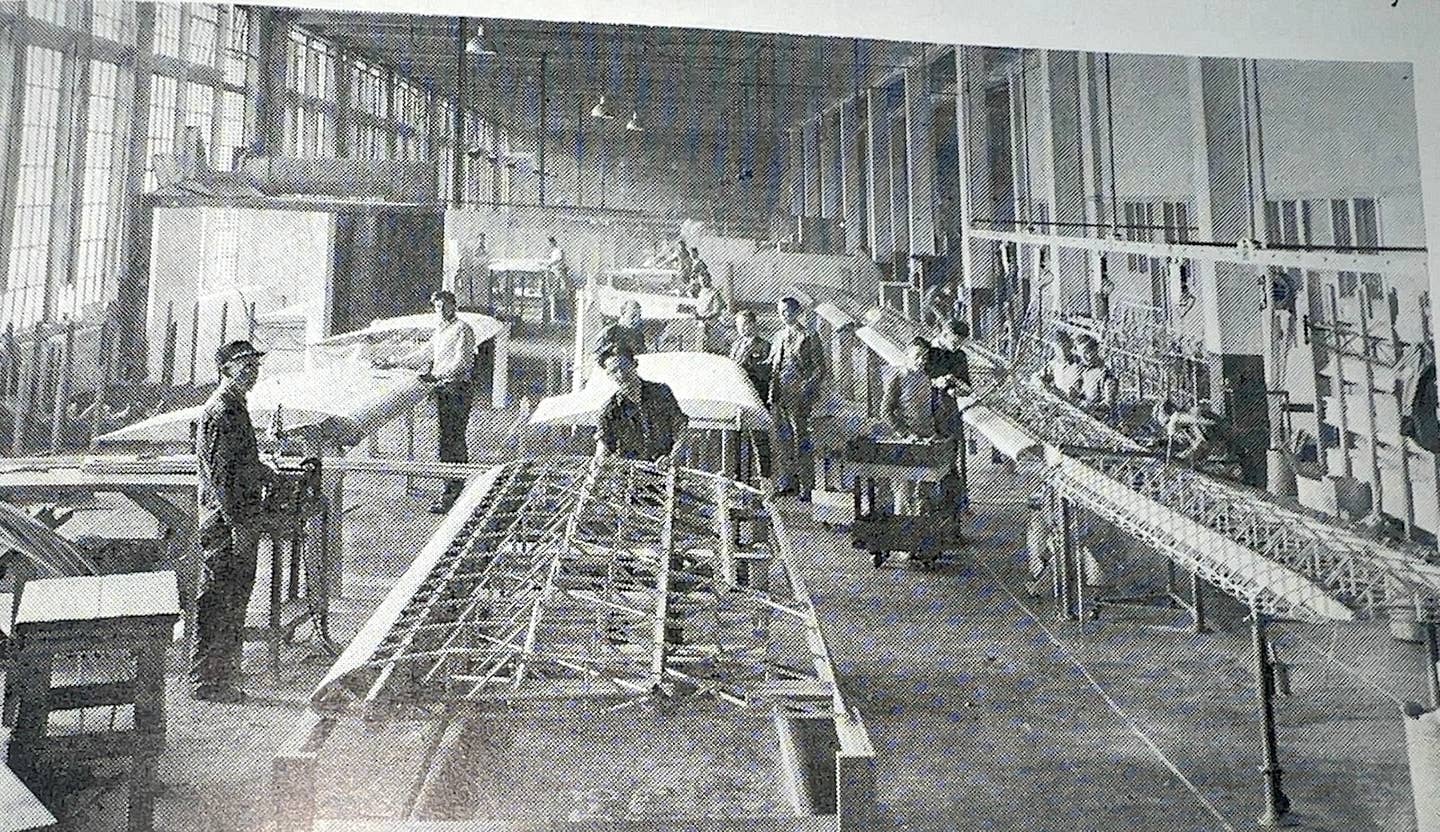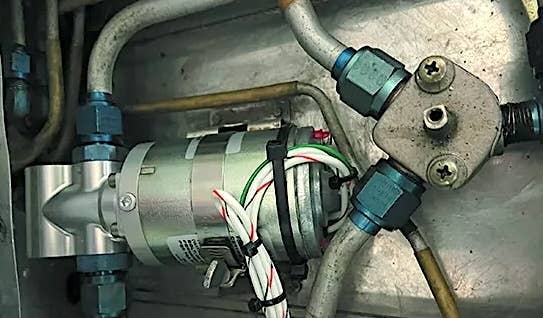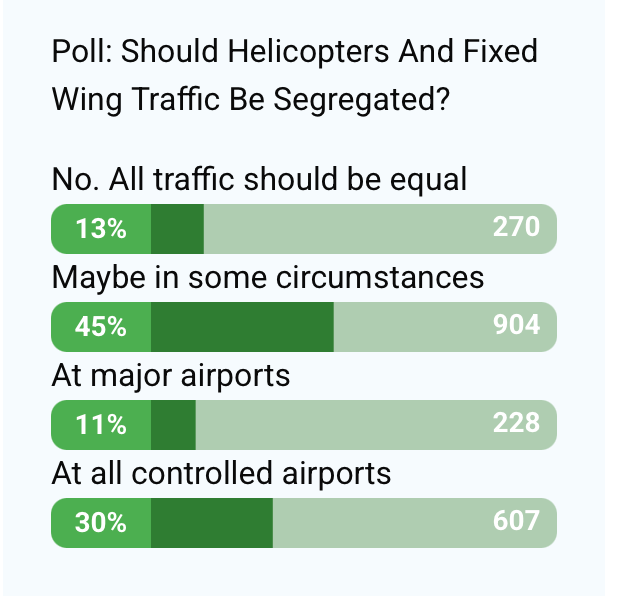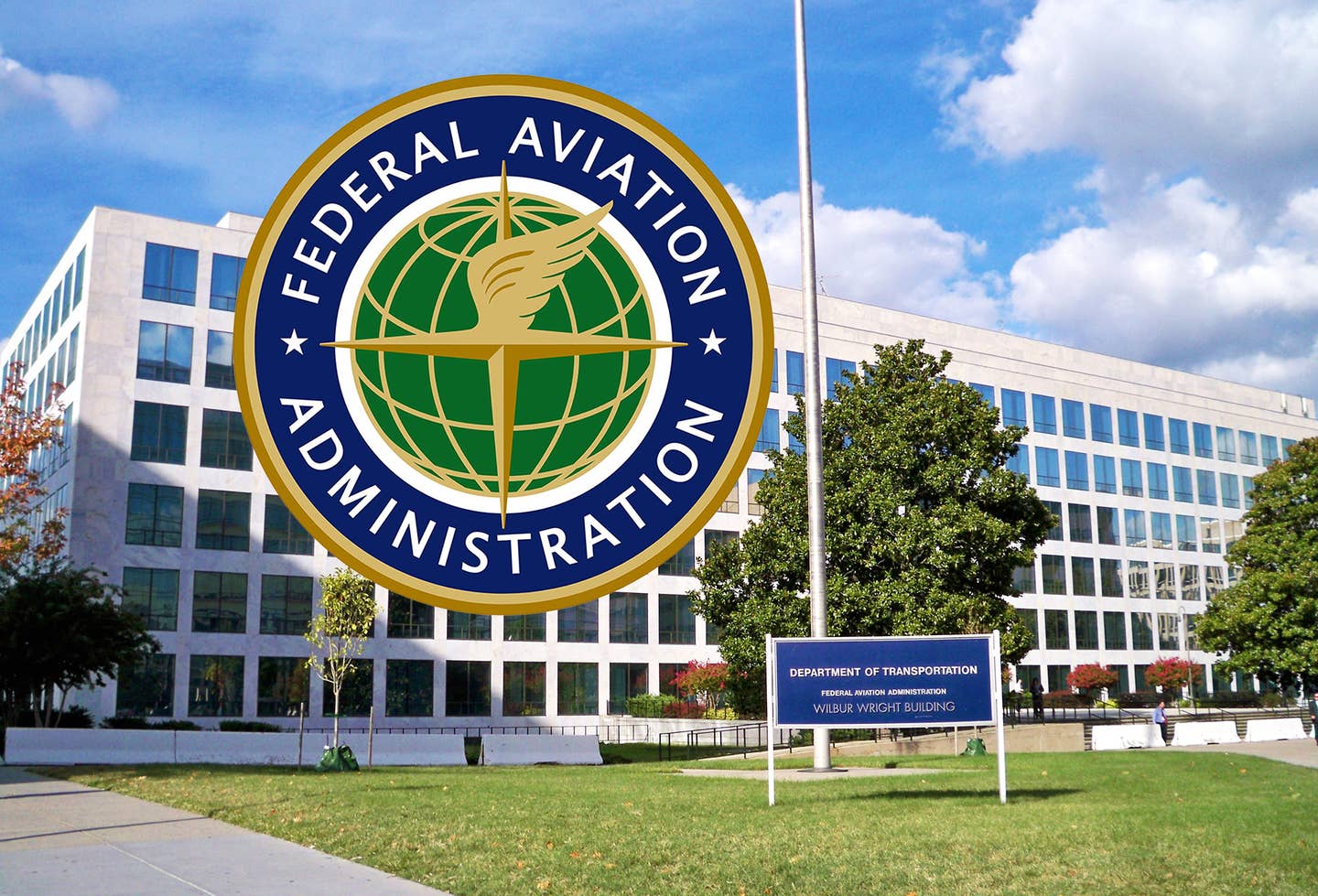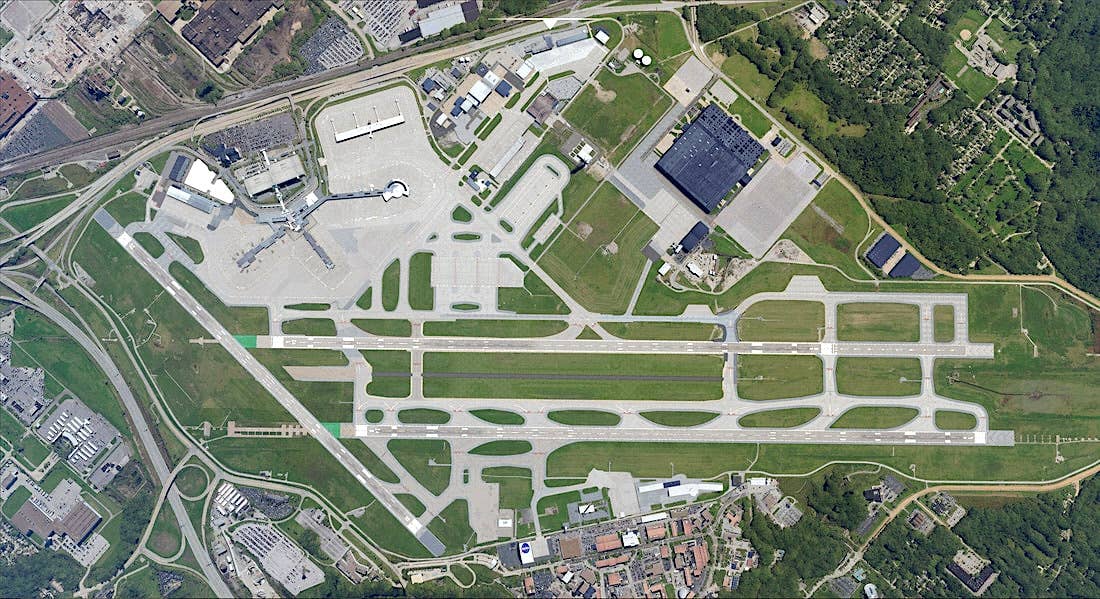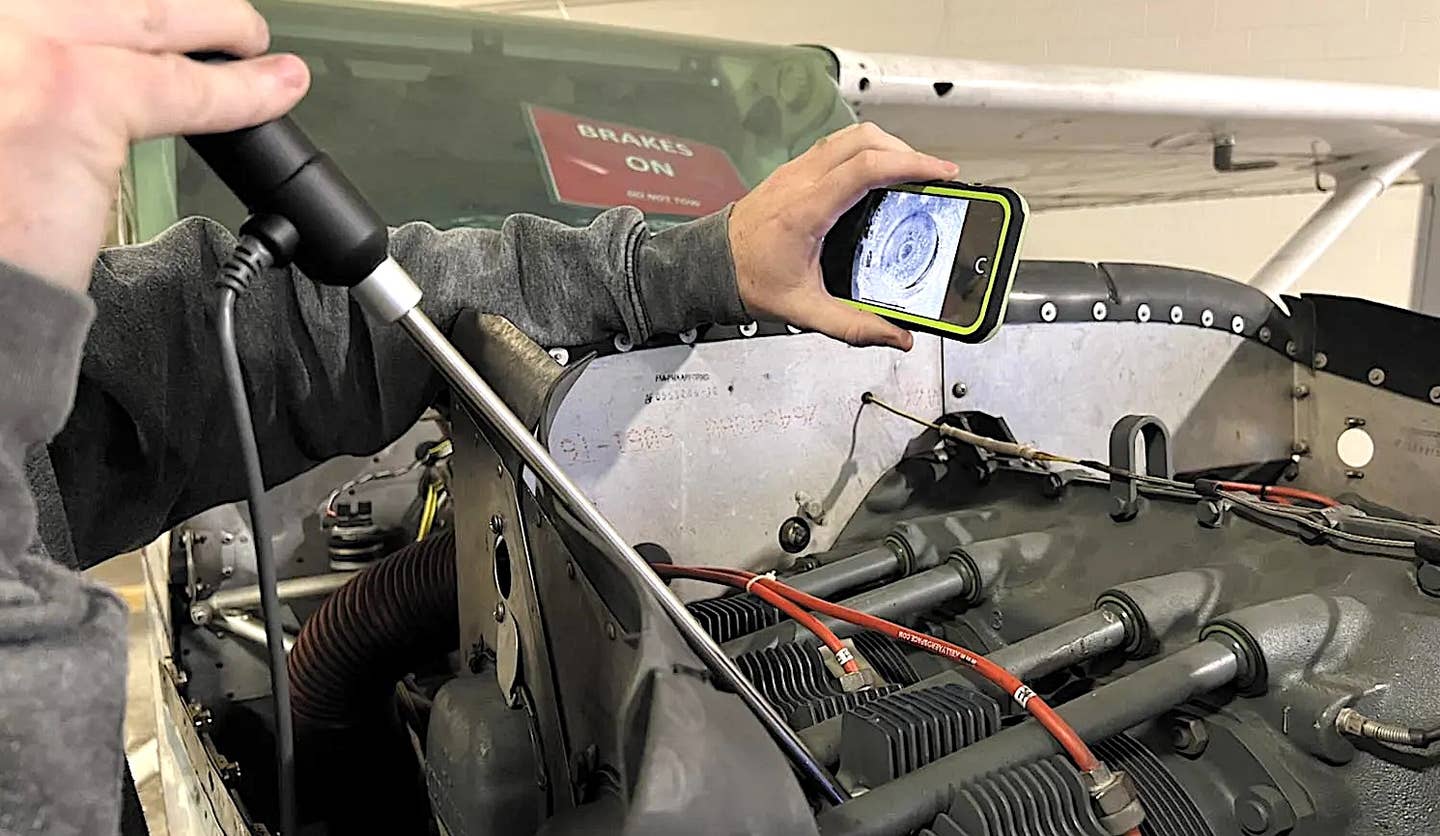A New Homebuilt And Rusty Pilots
Not all flight reviews are equal, and rusty pilots are not at all uncommon, but I recently faced a scenario that gave me pause. It read like the beginning of…

Not all flight reviews are equal, and rusty pilots are not at all uncommon, but I recently faced a scenario that gave me pause. It read like the beginning of an NTSB report with a stack of extremely novel circumstances. My choice was either be one of the contributing factors to an accident or one of the mitigations. My goal was the latter.
I recently had the opportunity to provide a flight review for two pilots—a father and son—who had taken a roughly five-year break from flying. During that time, they built a new plane. It was now ready for its maiden flight, but they, as pilots, were not.
Mitigating Risks
Knowing this, I focused my side of the flight review on studying the risks of test flights, while the flight reviewees made sure they were back up to snuff on general aviation basics.
They expressed their nervousness, which was understandable. Who wants to show their flight skills to a critic when those skills are at low proficiency? It is human nature to want to show your best side, but a rusty pilot flight review will show the naked truth. I explained there is nothing wrong with being out of practice, and a flight review is not a test, but an opportunity to learn. Their anxiety acknowledged, we moved on to the needed practice.
In preparation for the flight review’s ground portion, both rusty pilots completed a standard online flight review course through the WINGS program, allowing me to focus on the greatest immediate risk: Their next flight after the flight review would be in a brand-new aircraft with a brand-new engine.
Burnishing Rusty Skills
Rusty pilot flight reviews usually involve going over some basics the pilot may have forgotten. It may also mean spending more time at the controls than normal until muscle memory is fully restored to a safe operational condition.
To complete a flight review, conventional-gear pilots need to master all ground handling while also consistently nailing wheel- and three-point landings. My first goal was to inoculate at least their next few flights from the dreaded ground loop. A ground loop is a violent, uncontrolled horizontal rotation where the heavier front of the plane swings to the back with only the slightest bit of provocation. Conventional-gear planes are prone to ground loops if the rudder is not managed correctly while landing, taking off or taxiing. Even exquisitely current tailwheel pilots are capable of ground loops. Rusty pilots, therefore, need skill-honing and verification of rudder skills as a critical part of their flight review.
High-Performance Training
The addition of power—moving to a higher-powered Bearhawk from a low-powered Luscombe (see “Trading Up” below)—added another variable. While an IO-360 isn’t exactly a hot rod, it can produce more than 200 hp with the right prop. More power amplifies the many things that can go south, particularly during the takeoff phase, enough that the FAA requires an additional high-performance endorsement. So, besides getting the rusty pilots up to speed on takeoffs and landings, they would also need that endorsement.
For this reason, we agreed to use my 1954 Cessna 180, which is much more similar to the Bearhawk than my Cub is. My 180 weighs in at around 1700 pounds empty, with a gross weight of 2950. In comparison, their empty Bearhawk weighs 1400 pounds with a max gross of 2500. The 180’s comparative nose-heaviness gives it a greater tendency to ground loop when power is reduced or when directional control is not meticulously maintained. Both the Bearhawk and the 180 have cowl flaps and a Johnson bar—a big handle on the floor between the seats—for wing flaps.
Tailwheel Training
Perhaps the biggest skill needed to fly a high-performance aircraft is the ability to apply right rudder, particularly on takeoff, to compensate for the additional left-turning tendencies from greater horsepower. There are a couple of reasons this technique is double trouble for tailwheel pilots. First, anything that messes with directional control on takeoff is an even greater liability for a tailwheel. But second, and perhaps more importantly, is the factor of gyroscopic turning tendency.
When you power up a high-horsepower tailwheel aircraft, there can be enough airflow to lift the tail off the ground. When the tail comes up, the gyroscopic effect created by the spinning prop induces a strong left turn. This is rarely experienced by pilots flying underpowered or tricycle-gear aircraft, but it is quite noticeable in a tailwheel airplane, particularly one with more than 200 hp. Gyroscopic turning when the tail comes off the ground can be dramatic. When it happens, you need to add even more rudder or hold on for an unplanned off-runway adventure.
Test-Flying Psychology
For those who are unfamiliar with regulations for experimental amateur-built (EA-B) aircraft, they must undergo an airworthiness inspection by a qualified inspector when the project is completed. Once deemed airworthy, they must be test-flown in two phases, with limitations on both distance from home base and restrictions against carrying passengers of any kind. The test flights are used both to verify the flight characteristics of the newly manufactured plane and to establish some basic individual characteristics, like its actual stall speed. With few exceptions, only essential personnel are allowed to be aboard, meaning only one pilot at a time.
The reason for this is somewhat obvious. By definition, the pilot is a test pilot. The first flight of a unique, amateur-built aircraft is a true test flight. It is a risky endeavor by any measure, so it cannot be conducted over congested areas.
Engine-Out Practice
As the NTSB noted in its 2012 study, the two most common accident causes encountered on EA-B test flights are engine failure on takeoff and loss-of-control accidents—which most often involve tailwheel airplanes on the ground—followed by in-flight loss of control related to mishandling stalls. Most pilots, not just EA-B pilots, are unprepared for engine failures early in the flight sequence, particularly a complete loss of power on takeoff.
A few years ago, after experiencing a partial power loss on takeoff in my Cub, I did some research that ultimately led me to practice total power failure on takeoff. (See Aviation Safety’s June 2014 issue.) I learned that when you lose power on takeoff, you need to push the nose over immediately...not after a moment’s hesitation, but right now. It is a serious experience and can require extremely aggressive recovery maneuvers.
Engine-out practice is not for the faint of heart, but it is possible to do it safely if you have a long runway. Because it creates an uncomfortable sight picture, not just in the cockpit, but out of it as well, the first part of the exercise should involve warning tower and other witnesses on the ground what will be underway. If you do not warn them, they will be reaching for the crash phone when you pull power for the simulation.
After my no-longer-rusty test pilots were back to their former level of proficiency and had nailed down stalls, takeoffs and landings—which didn’t take as long as they thought it would—and were adapted to the more-powerful and more-squirrelly plane, it was time to head to a 9000-foot-long runway to practice engine-out-on-takeoff exercises. First, I demonstrated —power full, accelerate, rotate to get airborne, accelerate to best glide—and then pull power at roughly 200 feet above the runway. To recover, the pilot needs to go from the takeoff attitude of 10-20 degrees nose up to a pitch attitude for best glide speed, which is roughly 10-20 degrees nose down. The pitch change is dramatic and has to be fast to avoid a stall. In an actual event, I estimate there may be a good five beats of shock and disbelief before you start the maneuver, so we want to practice for this.
For the record, any pilot who has seriously practiced an engine failure on takeoff will adopt shallower climbs at or above VY, which often coincides with best glide speed. Recovering from a VY or better climb is challenging enough. Engine-out practice will cure a show-off pilot from super-aggressive VX takeoffs. (In my view, recovering from a VX takeoff engine failure without bending an airplane is nearly impossible.)
My goal was simply to expose the primary test pilot to the one skill statistics show he needs the most, the one I knew he likely did not have.
Eating An Elephant
Are you wondering if two rusty pilots can safely upgrade from flying a simple, light airplane and become test pilots for a newly built, high-performance tailwheel-equipped airplane? Of course they can. They can even do it safely.
Managing a risk stack, which includes being rusty, flying a tailwheel-equipped airplane and preparing for a test flight is not overwhelmingly risky if the added risk is managed methodically. When pilots choose to accept added risk, like landing in a gusty crosswind, it isn’t foolish if the risk can be managed and mitigated by thoughtful and deliberate choices. Like eating an elephant, it isn’t hard, you just have to do it one bite at a time.
For my father-and-son team, the first step in managing the risk was to recover general flying knowledge, which they did through WINGS seminars, ground study and conversations with other pilots. The second step is to recover general pilot proficiency, which they did during the general flight review sequence. Third, they recovered tailwheel proficiency by seeking a flight review in a tailwheel aircraft, a smart choice. And finally, as future test pilots, they trained for the novel but statistically speaking not uncommon scenario most likely to strike an EA-B test pilot—engine failure on takeoff.
One of the keys to managing risk is to look it in the eye and acknowledge it, and then take specific and deliberate steps to do something about it. The EAA, NTSB and FAA have all gone above and beyond to reduce the risks for EA-B aircraft—and it is working. That education effort was not lost on my flight review clients. They did their homework. I can also report their first flight went well. They had the confidence they needed.
In the end, some pilots accept more risk than others. The smart ones simply understand that and do their best to mitigate the added risk as much as possible.
Trading Up
Five years earlier, my rusty pilots decided to sell their 1947 Luscombe 8E Silvaire so they could build a new Bearhawk experimental. The Luscombe (pictured) is a two-seat, tailwheel-equipped airplane with side-by-side seating. It’s all metal and has no flaps. The 8E was factory-equipped with an 85-hp engine.
By contrast, the Bearhawk they built is a four-seat model with a brand-new 260-hp engine. Their new plane would be roughly double the weight and have three times the power of their Luscombe.
Knowing their history, I knew the flight review had to upgrade the pilots’ capability to handle more than twice the airplane and overcome their inevitable skill degradation from not flying for five years. An equally important consideration was knowing that their next flight—after completing the flight review—was the maiden flight in their freshly built, never-flown Bearhawk with a brand-new engine.
Tailwheels Add To EA-B Risks
Tailwheel airplanes, like EA-B airplanes, are disproportionately involved in incidents and accidents. The good news is that tailwheel-specific mishaps are rarely fatal. The bad news is they are always expensive.
I liken tailwheel flying to having a feral animal as a pet. I would love to say that, with a little practice, the tailwheel can be completely tamed, but it would only be partially true.
The challenge for new tailwheel pilots is getting enough practice and building enough experience to keep the plane aligned. It takes time to get comfortable with the rhythm of the happy-feet rudder dance. Once that skill is well in hand, the next challenge is complacency, followed by simply bad luck.
When a tailwheel airplane is also an EA-B, you are effectively doubling the risk of a mishap. For example, in 2018 in Idaho, 54 percent of all accidents involved tailwheel aircraft, and 27 percent of them were homebuilts, which is way out of proportion for Idaho in 2018.
While it sounds like I am knocking EA-Bs and tailwheel aircraft as unsafe, nothing could be further from the truth. They are safe, just not as safe as certified or tricycle-gear airplanes. See “EA-B Test Flight Risk” below for more on EA-B safety.
EA-B Test Flight Risk
Homebuilt aircraft are not unsafe, but according to a 2012 NTSB study, they had higher accident rates in comparison to certified aircraft, often for different reasons. In particular, powerplant failures and loss-of-control accidents were higher. Powerplant failures and loss-of-control-in-flight accidents in particular were higher for EA-B than for certified aircraft. Almost 10 percent of homebuilt accidents occur on its maiden flight—nine percent for its first flight with a new owner after a sale.
Fortunately, the FAA, EAA and NTSB have worked hard on this issue since that study. While EA-B aircraft are still involved in more accidents relative to their portion of the GA fleet and number of hours flown, and the fatality rate is also higher, the good news is those rates are steadily dropping. In 2017, EA-B had an all-time low fatality rate of 2.63 fatal accidents per 100,000 hours flown (compared with a fatality rate of 0.84 per 100,000 for GA in general that same year).
Unfamiliar Aircraft Transition
The FAA’s Airmen Transition to Unfamiliar Airplanes Advisory Circular (AC 90-109A) helps plan the transition to unfamiliar fixed-wing certified or experimental airplanes. It includes information and guidance for owners and pilots of experimental, simple, complex, high-performance and/or unconventional airplanes. It also provides information to flight instructors who teach in them.
Mike Hart makes his living as an Idaho-based passenger, cargo and backcountry pilot. He also is the Idaho liaison to the Recreational Aviation Foundation.
This article originally appeared in the June 2019 issue of Aviation Safety magazine.
For more great content like this, subscribe to Aviation Safety!

